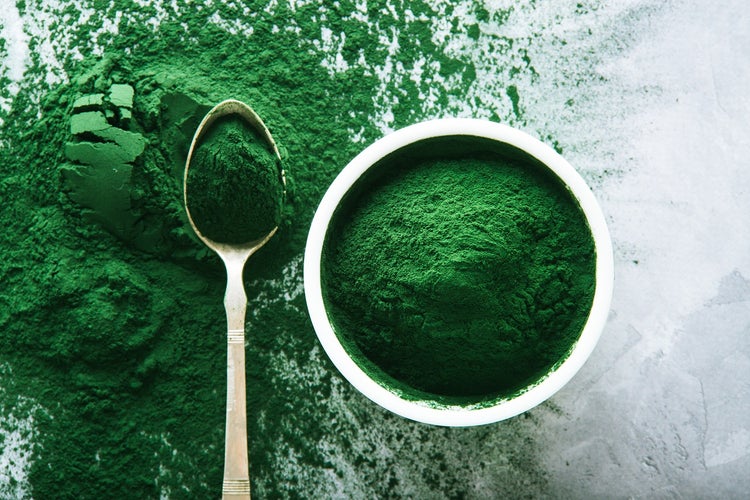Should You Try Algal Proteins? The 101 on Chlorella and Spirulina

Blue pancakes, emerald-green smoothies, teal overnight oats. For the technicolor hues of these social media darlings, we have microalgae to thank, specifically spirulina and chlorella. Not only do these plant foods, which come in powdered, tablet, or capsule form, look cool—they’re also rich in nutrients. Read on to learn more, including how you can integrate these newly popular ingredients into your diet.
A sea of health benefits
For plant foods, chlorella and spirulina are particularly rich in protein, according to a 2017 article in the peer-reviewed scientific open-access journal, Foods. A tablespoon of spirulina, for instance, boasts about four grams. For vegan athletes in particular, spirulina and chlorella are excellent sources of the macronutrient. In fact, for this reason, spirulina—deemed a “super food” by the World Health Organization—has been used by American astronauts as a dietary supplement.
According to Healthline, both types of microalgae are also high in omega-3 fatty acids. Rich in vitamins, minerals, and antioxidants, they might benefit blood sugar control, blood fat composition, blood pressure, cholesterol, and gastrointestinal health as well, several studies have suggested.
How to include algal proteins in your diet
You can supplement with chlorella or spirulina by taking them in pill or tablet form. That said, since spirulina and chlorella can pose some health risks, check with your doctor before beginning to supplement with them. For instance, “their high Vitamin K content could be problematic for individuals on blood thinning medications,” says Kristin Kirkpatrick, RD, the Cleveland Clinic, who adds that long-term studies on the safety and claims associated with these supplements are lacking.
If you’d still like to try them, “a standard daily dose of spirulina is 1 to 3 grams, but doses of up to 10 grams per day have been used effectively,” according to Healthline. Since supplements are not regulated by the federal government, look for products with third-party seals, for example from NSF International or the United States Pharmacopeial Convention.
If you’d rather not pop pills, cook with powdered versions. Just know that, since spirulina and chlorella taste like seaweed, they’re best-suited for savory dishes, like miso soup. In sweeter preparations, such as my Mint-Chocolate Smoothie with Spirulina (recipe below), use ingredients with stronger flavors, like fresh mint or cocoa powder. They’ll overpower the microalgaes’ fishy notes.
Mint-Chocolate Smoothie With Spirulina
Makes 3 cups (3 to 4 servings)
Dark green in hue, this sweet minty smoothie is loaded with nutrients. To make it a meal replacement, swap in soymilk for the almond milk. For a more decadent twist, top with chocolate chips instead of the cocoa powder.
2 cups unsweetened vanilla almond milk
1 small extremely ripe banana
1/2 cup frozen pineapple cubes
1/3 cup fresh mint leaves
2 whole dates, pitted
2 tablespoons powdered spirulina or chlorella
1 teaspoon unsweetened cocoa powder, plus about ¼ tsp extra for sprinkling, divided
1/8 teaspoon salt
Add all ingredients to a blender, and puree until smooth. Divide among four glasses and sprinkle each serving with a pinch of cocoa powder. Serve.
Photo credit: maramorosz, Shutterstock